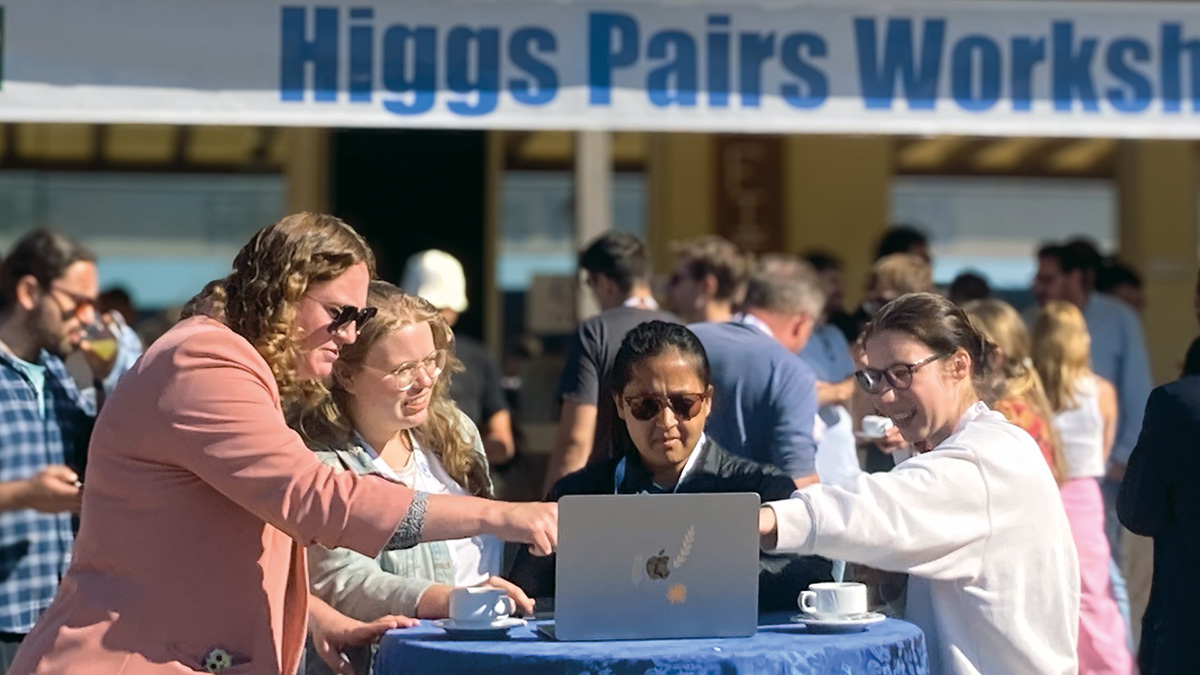Precise measurements of the Higgs self-coupling and its effects on the Higgs potential will play a key role in testing the validity of the Standard Model (SM). 150 physicists discussed the required experimental and theoretical manoeuvres on the serene island of Elba from 11 to 17 May at the Higgs Pairs 2025 workshop.
The conference mixed updates on theoretical developments in Higgs-boson pair production, searches for new physics in the scalar sector, and the most recent results from Run 2 and Run 3 of the LHC. Among the highlights was the first Run 3 analysis released by ATLAS on the search for di-Higgs production in the bbγγ final state – a particularly sensitive channel for probing the Higgs self-coupling. This result builds on earlier Run 2 analyses and demonstrates significantly improved sensitivity, now comparable to the full Run 2 combination of all channels. These gains were driven by the use of new b-tagging algorithms, improved mass resolution through updated analysis techniques, and the availability of nearly twice the dataset.
Complementing this, CMS presented the first search for ttHH production – a rare process that would provide additional sensitivity to the Higgs self-coupling and Higgs–top interactions. Alongside this, ATLAS presented first experimental searches for triple Higgs boson production (HHH), one of the rarest processes predicted by the SM. Work on more traditional final states such as bbττ and bbbb is ongoing at both experiments, and continues to benefit from improved reconstruction techniques and larger datasets.
Beyond current data, the workshop featured discussions of the latest combined projection study by ATLAS and CMS, prepared as part of the input to the upcoming European Strategy Update. It extrapolates results of the Run 2 analyses to expected conditions of the High-Luminosity LHC (HL-LHC), estimating future sensitivities to the Higgs self-coupling and di-Higgs cross-section in scenarios with vastly higher luminosity and upgraded detectors. Under these assumptions, the combined sensitivity of ATLAS and CMS to di-Higgs production is projected to reach a significance of 7.6σ, firmly establishing the process.
These projections provide crucial input for analysis strategy planning and detector design for the next phase of operations at the HL-LHC. Beyond the HL-LHC, efforts are already underway to design experiments at future colliders that will enhance sensitivity to the production of Higgs pairs, and offer new insights into electroweak symmetry breaking.
